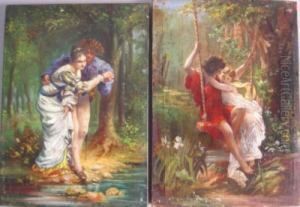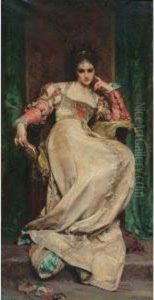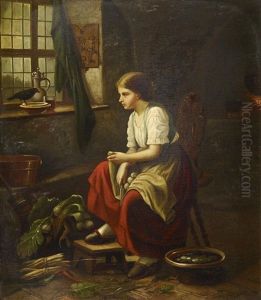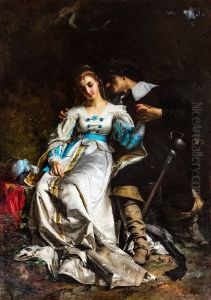Anatole Vely Paintings
Anatole Vely, born Anatole François Vély on December 29, 1838, in Ronsoy, France, was a 19th-century French painter. Vely is often recognized for his contributions to the Symbolist movement, although he began his artistic journey in the realm of academic painting. His works often depicted scenes of a mystical or allegorical nature, aligning with the Symbolist's interest in the enigmatic and the esoteric.
Vely's initial training was under his father, who was also an artist, before he moved to Paris to continue his education. In Paris, he became a student of François-Édouard Picot, a classical painter who was known for his large-scale historical and mythological scenes. Under Picot's guidance, Vely developed a strong foundation in the academic tradition, which he later adapted to suit his own artistic inclinations.
Throughout his career, Vely exhibited his works at the Paris Salon, the official art exhibition of the Académie des Beaux-Arts in Paris. His Salon entries received mixed reviews, with some critics praising his technical skill and others questioning his thematic choices. It was Vely's fascination with the otherworldly and the introspective that eventually led him to the Symbolist movement, which was burgeoning in the late 19th century.
Notable works by Vely include 'La Femme au paon' (The Woman with the Peacock), which epitomizes his Symbolist style. This painting, like many of his others, features a dream-like atmosphere and a focus on the female figure, often imbued with a sense of melancholy or contemplation.
Anatole Vely's life was cut short when he died on May 23, 1882, in Paris. Despite his relatively brief career, his artistic legacy is marked by his unique blend of academic skill and Symbolist thematic exploration. His paintings continue to be studied and appreciated for their ethereal quality and contribution to the transition from academic to modern art.














